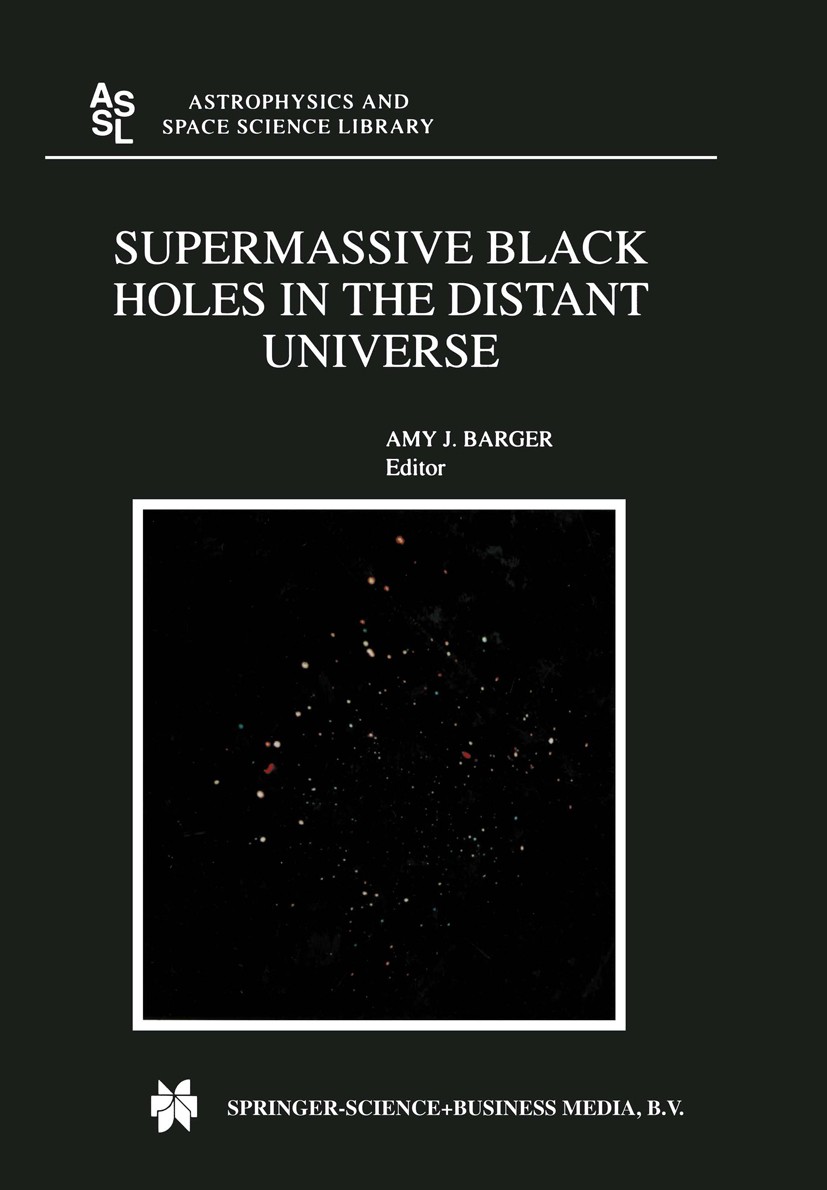| 书目名称 | Supermassive Black Holes in the Distant Universe | | 编辑 | Amy J. Barger | | 视频video | http://file.papertrans.cn/882/881881/881881.mp4 | | 丛书名称 | Astrophysics and Space Science Library | | 图书封面 |  | | 描述 | Quasars, and the menagerie of other galaxies with "unusual nuclei", now collectively known as Active Galactic Nuclei or AGN, have, in one form or another, sparked the interest of astronomers for over 60 years. The only known mechanism that can explain the staggering amounts of energy emitted by the innermost regions of these systems is gravitational energy release by matter falling towards a supermassive black hole --- a black hole whose mass is millions to billions of times the mass of our Sun. AGN emit radiation at all wavelengths. X-rays originating at a distance of a few times the event horizon of the black hole are the emissions closest to the black hole that we can detect; thus, X-rays directly reveal the presence of active supermassive black holes. Oftentimes, however, the supermassive black holes that lie at the centers of AGN are cocooned in gas and dust that absorb the emitted low energy X-rays and the optical and ultraviolet light, hiding the black hole from view at these wavelengths. Until recently, this low-energy absorption presented a major obstacle in observational efforts to map the accretion history of the universe. In 1999 and 2000, the launches of the Chandra a | | 出版日期 | Book 2004 | | 关键词 | Accretion; Galaxy; Observatories; Quasar; Universe | | 版次 | 1 | | doi | https://doi.org/10.1007/978-1-4020-2471-9 | | isbn_softcover | 978-90-481-6662-6 | | isbn_ebook | 978-1-4020-2471-9Series ISSN 0067-0057 Series E-ISSN 2214-7985 | | issn_series | 0067-0057 | | copyright | Springer Science+Business Media B.V. 2004 |
The information of publication is updating

|
|
 |Archiver|手机版|小黑屋|
派博传思国际
( 京公网安备110108008328)
GMT+8, 2025-12-14 05:58
|Archiver|手机版|小黑屋|
派博传思国际
( 京公网安备110108008328)
GMT+8, 2025-12-14 05:58


